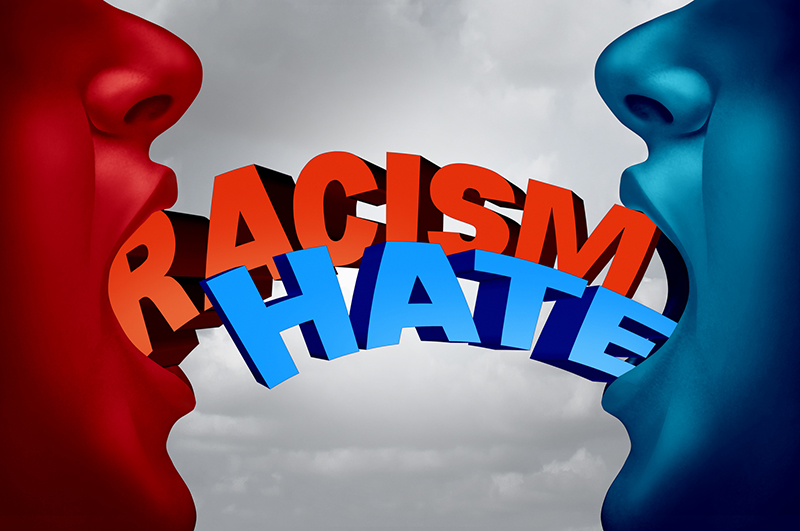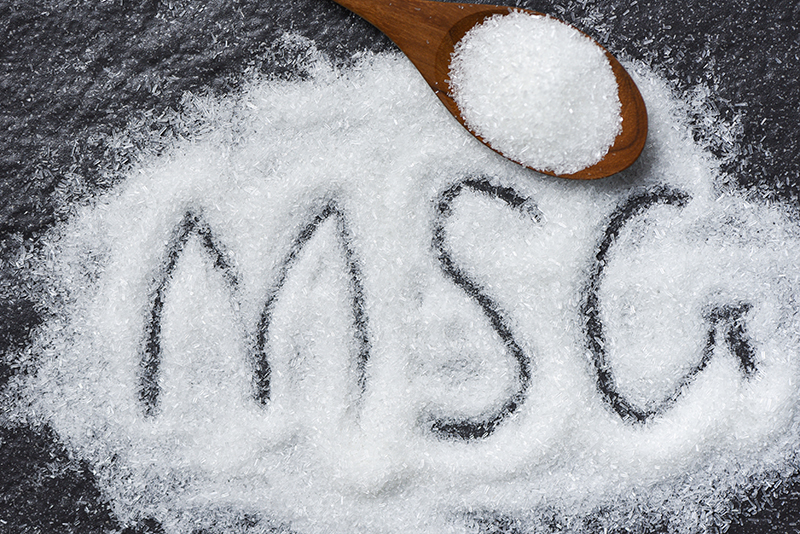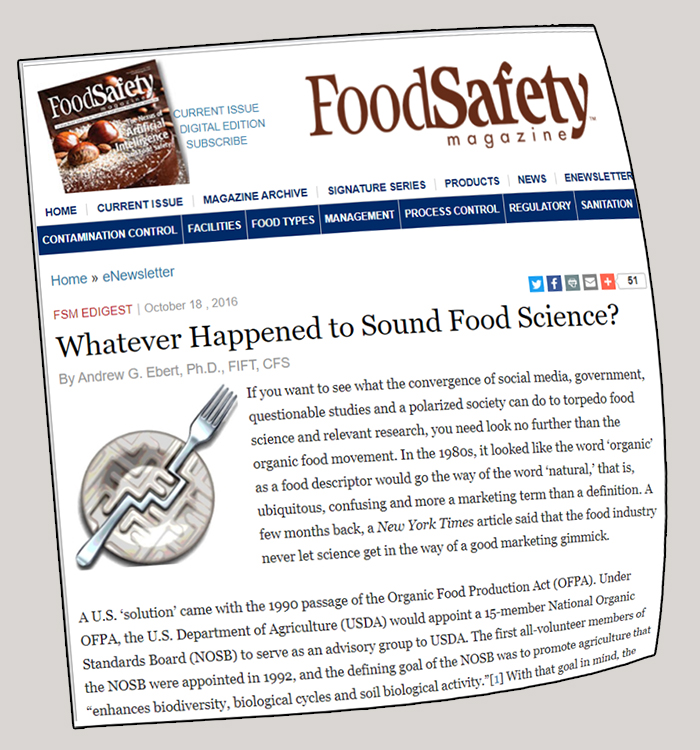Following are details of methodology used by industry in studies designed to demonstrate that MSG is a harmless food additive. Not every method is used in every study.
Method 1: Select subjects who claim to be sensitive to the product being tested but might not be sensitive, and might not react to the product when ingested. The claim of investigators will be that subjects are people who claim to be sensitive to the product being tested, and the conclusion will be that people who claim to be sensitive are not really sensitive to the product. Keys to use of this method lie with enticing subjects who are not sensitive to say that they are sensitive (see A below), while disqualifying potential subjects who might be sensitive to the product (see B and C), and frightening subjects who might qualify, but fear that they might suffer adverse reactions if they participated (see D).
A) Offer several hundred dollars to persons who agree to participate in the study and claim to be sensitive to the product without checking the validity of their claims.
B) Require that subjects qualify as “well subjects:” people who claim to have no pre-existing medical conditions such as asthma, allergies, seizures, or headaches, for example, and therefore have no history of adverse reactions.
C) Require that people who would participate in a study first demonstrate that they will not react to “screening placebos” that will contain toxic or allergenic material similar to the test material. Only people who were not sensitive to the test material would then be serving as subjects in these studies.
D) Meet the requirements for obtaining informed consent. Requiring informed consent biases these studies (2,3).
Method 2: Minimize the likelihood that a subject will react to the test material.
A) Use rather small amounts of the product being tested.
B) Provide test material in a form that will minimize any adverse effect. Encapsulating the product, for example, will guarantee slow release, and possibly cause less effect.
C) Give subjects something to eat with the test material or prior to being tested that will slow the product’s uptake.
D) Do not exclude subjects who are currently taking medications that might block adverse effects of the product.
E) Limit the time span during which adverse reactions will be recorded so some reactions to test material will occur after recording time has lapsed, and will not be counted as reactions.
F) Time administration of product and placebo so the reactions are likely to overlap, and reactions to the product will be counted as reactions to the placebo.
G) Exclude some of the known or alleged adverse reactions to the test material from consideration.
Method 3: Maximize the probability that subjects will react to the placebo.
A) Lace the material called “placebo” with material that will cause reactions similar to, or identical to, the adverse reactions allegedly caused by the product.
B) Provide meals or snacks for all subjects prior to testing or during the test period, being certain that they contain ingredients to which subjects might be allergic or sensitive — thereby possibly increasing the toxic loads of placebos to exceed subjects’ tolerance levels, and precipitate adverse reactions to placebos.
C) Make no attempt during the course of the study to prevent subjects from ingesting food, drink, or dietary supplements, or chewing gum, to which they might be allergic or sensitive.
D) Schedule test and placebo treatments so a reaction to test material might occur after the placebo is given and be counted as an adverse reaction to the placebo.
Method 4: Focus on non-relevant measures.
A) Focus on an adverse reaction, change in blood pressure for example, that will not change, or will change only marginally when a subject ingests the test material. Use those data as basis for the claim that the test material does not cause adverse reactions.
B) Exclude some of the known relevant effects or adverse reactions from consideration.
Method 5: Subject data to sophisticated sounding inappropriate statistical analyses.
A) Use inferential statistics on data collected from volunteer subjects not randomly drawn from any population, thereby violating one of the tests’ underlying assumptions.
B) Apply statistical tests to data from research designs that fail to meet one or more of the tests’ underlying assumptions.
Method 6: Without considering whether or not proposed statistical tests are appropriate, minimize the probability that statistically significant relationships and/or statistically significant differences between groups being compared will be found.
A) Minimize the number of subjects used. Start with a limited number of subjects and/or design a two-phase study wherein a number of subjects are eliminated following Phase One.
B) Where analyses of raw data do not produce the desired results, create ratios, relative frequencies, or other indices that will reduce differences in response rate between subjects responding to test material and subjects responding to placebos.
Method 7: Draw unjustified conclusions from inappropriately interpreted statistical analyses.
The statistical model on which inferential statistics are based allows the investigator to conclude that it is highly likely (95 or 99 percent probability) that differences found were not due to chance. The statistical model does not, however, allow the investigator to conclude that there is no difference between the two groups when a statistically significant difference is not found.
Drawing conclusions based on failure to find a difference (i.e., on failure to reject the null hypothesis) is grossly inappropriate (4-6). Failure to find a statistically significant difference between groups may provide useful information for planning one’s next experiment, but it proves nothing.
Method 8: Ignore relevant data; transform relevant data so that its value declines; and/or be selective about which data will be reported.
Beyond research design…
In addition to issues of research design and methodology, investigators have been known to:
A) Draw conclusions that do not follow from the results of the study;
B) Minimize discussion of embarrassing data;
C) Direct readers’ attention to things deemed to be of value to industry; not necessarily reporting all data or results of statistical tests;
D) Include discussion of ideas that have little or nothing to do with the results of the study;
E) In discussion, include material that industry wants presented to the public, whether or not it is relevant to the stated intent of the research;
F) Fail to publish, or even talk about, the results of studies that don’t come out as planned.
The issue of placebo integrity…
The test material used in these studies was the flavor enhancer monosodium glutamate, supplied directly or indirectly by Ajinomoto, Co., Inc.
Processed free glutamic acid is, by definition, an inevitable component of monosodium glutamate. Processed free glutamic acid is a known neurotoxin and endocrine disruptor (7) alleged to cause adverse reactions ranging from mild and transitory to debilitating and life threatening (8,9). Processed free glutamic acid will be found in ingredients other than monosodium glutamate — in an escalating number of ingredients used in a wide range of processed foods.
Processed free glutamic acid made by any method will cause the same brain lesions, neuroendocrine disorders, retinal degeneration, and adverse reactions as the processed free glutamic acid found in monosodium glutamate (10,11). In the United States, consumers who understand that they react adversely to processed free glutamic acid, no matter how it is manufactured, and regardless of the ingredient in which it is found, often refer to all processed free glutamic acid as “MSG.” Those who manufacture, sell, and promote the use of monosodium glutamate routinely restrict their use of the acronym “MSG” to refer to monosodium glutamate; and “MSG” is often used as shorthand for monosodium glutamate in the scientific literature. When researchers report that no subject had been given access to MSG, it does not preclude the possibility that there may have been access to processed free glutamic acid delivered in a form other than monosodium glutamate.
Ingredients that contain processed free glutamic acid include, but are not limited to, monosodium glutamate, monopotassium glutamate, L-glutamic acid, L-glutamate, all hydrolyzed protein products, autolyzed yeast, yeast extract, calcium caseinate, sodium caseinate, gelatin, pectin, citric acid made from corn, maltodextrin, textured vegetable protein, most natural flavors and natural flavoring, soy protein isolate, and whey protein concentrate. Reactions to processed free glutamic acid will occur regardless of the names of the ingredients in which it is hidden (11).
Aspartame is known to cause the same brain damage and endocrine disorders as are caused by processed free glutamic acid (7).
Aspartame contains aspartic acid, a neurotoxic endocrine disruptor that causes virtually identical brain lesions and neuroendocrine disorders as those caused by the glutamic acid component of monosodium glutamate and the other ingredients that contain processed free glutamic acid (7,12); and those two neurotoxic amino acids are known to work in an additive fashion (7). Aspartame also contains phenylalanine and a methyl ester. According to records no longer kept by the Adverse Reactions Monitoring System of the FDA, ingestion of aspartame produces, with rare exception, the same adverse reactions as those produced by ingestion of monosodium glutamate; and monosodium glutamate and aspartame reactions occur with the same relative frequency (8,13).
Beginning in 1978, before aspartame was approved by the FDA for use in food, glutamate-industry researchers used aspartame in placebos (14). Over and above the fact that use of aspartame in placebos is grossly inappropriate, the fact that aspartame-containing products are supposed to carry a warning on their labels did not deter industry from using the substance, or the FDA from allowing its use.
If you have questions or comments, we’d love to hear from you. If you have hints for others on how to avoid exposure to MfG, send them along, too, and we’ll put them up on Facebook. Or you can reach us at questionsaboutmsg@gmail.com and follow us on Twitter @truthlabeling.
REFERENCES
- Samuels A. The toxicity/safety of processed free glutamic acid (MSG): a study in suppression of information. Account Res. 1999;6:259-310.
- Mitchell AM, Kline JA. Systematic bias introduced by the informed consent process in a diagnostic research study. Acad Emerg. Med 2008;15:225-30.
- Bjarnason NH, Kampmann JP. Selection bias introduced by the informed consent process. Lancet. 2003;361:1990.
- Ferguson GA. Statistical Analysis in Psychology and Education. New York: McGraw-Hill; 1959.
- Weinberg GH, Schumaker JA. Statistics: An Intuitive Approach. Belmont: Wadsworth; 1962.
- McNemar Q. Psychological Statistics. New York: Wiley; 1949.
- Olney JW, Ho O. Brain damage in infant mice following oral intake of glutamate, aspartate or cysteine. Nature. 1970;227:609-10.
- FDA Technical Information Specialist (HFS-728). Memorandum to Health Hazard Evaluation Board. Re: Summary of Adverse Reactions Attributed to MSG. June 26, 1997.
- Federation of American Societies for Experimental Biology (FASEB). Analysis of adverse reactions to monosodium glutamate (MSG). Raiten DJ, Talbot, JM, Fisher, KD, eds. Bethesda, MD: Life Sciences Research Office, FASEB; 1995:77-79.
- Olney JW, Ho OL, Rhee V. Brain-damaging potential of protein hydrolysates. N Engl J Med. 1973; 289:391-93.
- FDA Bureau of Foods. Letter to a consumer from S.I. Delgado. March 3, 1981. “…if you wish to avoid the so-called ‘Chinese restaurant syndrome,’ you should also avoid foods which contain hydrolized vegetable protein.”
- Price MT, Olney JW, Lowry OH, Buchsbaum S. Uptake of exogenous glutamate and aspartate by circumventricular organs but not other regions of brain. Neurochem. 1981;36:1774-80.
- FDA Technical Information Specialist (HFS-728). Memorandum to Health Hazard Evaluation Board. Re: Summary of Adverse Reactions Attributed to Aspartame. June 26, 1997.
- Ebert AG. Letter to Sue Ann Anderson, R.D., Ph.D., Senior Staff Scientist, FASEB. March 22, 1991.












